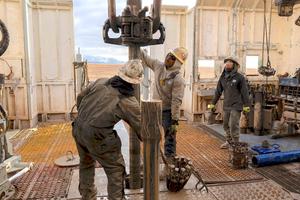Maasai herders with their cattle inside the Ngorongoro Conservation Area. Image courtesy of the Oakland Institute.
Maasai herding communities are being pushed off their ancestral land by the Tanzanian government and safari companies in favor of more lucrative tourism and hunting, according to a new report by the Oakland Institute, a California-based think tank. The restricted access to watering holes and arable land have made the Maasai more vulnerable to famine, particularly in recent drought years.
“As tourism becomes one of the fastest growing sectors within the Tanzanian economy, safari and game park schemes are wreaking havoc on the lives and livelihoods of the Maasai,” Anuradha Mittal, the Oakland Institute’s executive director and author of the report, said in a statement. “But this is not just about a specific company – it is a reality that is all too familiar to indigenous communities around the world. In too many places, governments, corporations, and even large conservation groups collude in the name of conservation, not just to force the indigenous off their land, but to force them out of existence.”
The report examines previously unpublished correspondence, government documents, court testimonies, and in-person interviews to map out the impact of two safari companies on Maasai communities in the Ngorongoro district, northern Tanzania. The report says that Tanzanian officials have forcibly removed Maasai villagers from their homes in recent decades to expand protected land for safaris and tourism-based hunting. It finds that Serengeti National Park rangers burned 114 bomas (traditional Maasai homes) in 2015, and 185 bomas in August 2017.
According to the report, villagers have been assaulted or arrested local police, park rangers, and company-employed security guards for trying to access the former Maasai land, which contains vital drinking water sources, grazing land for their cattle, and arable land to grow food.



